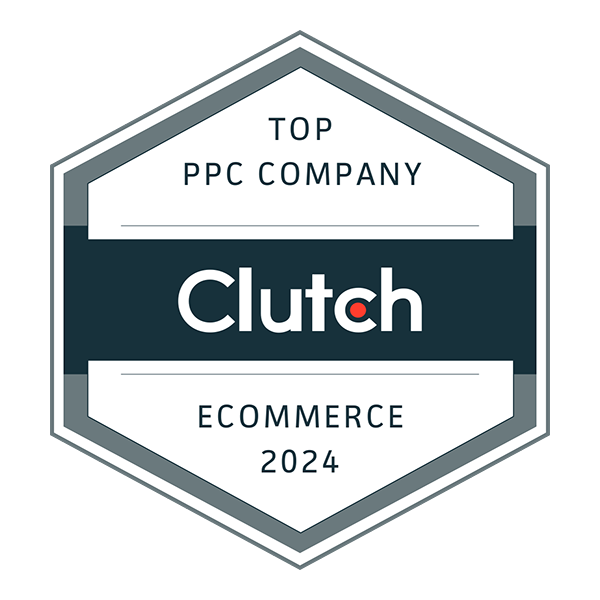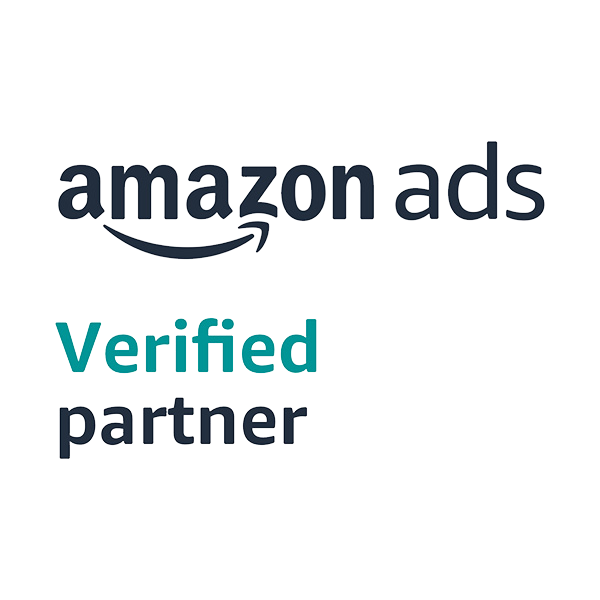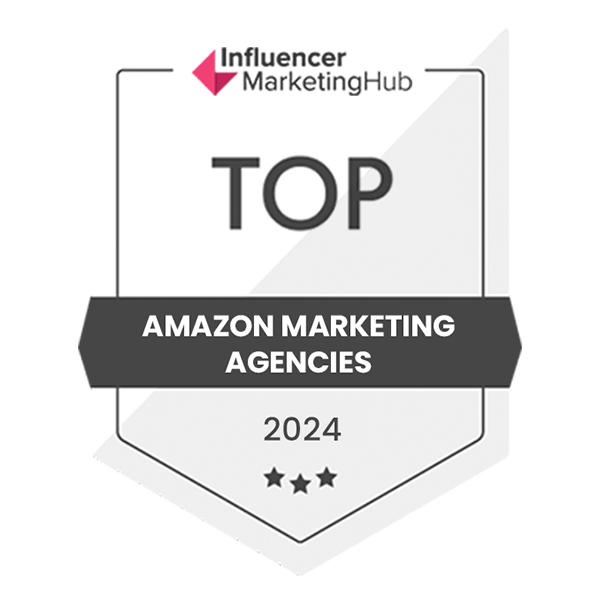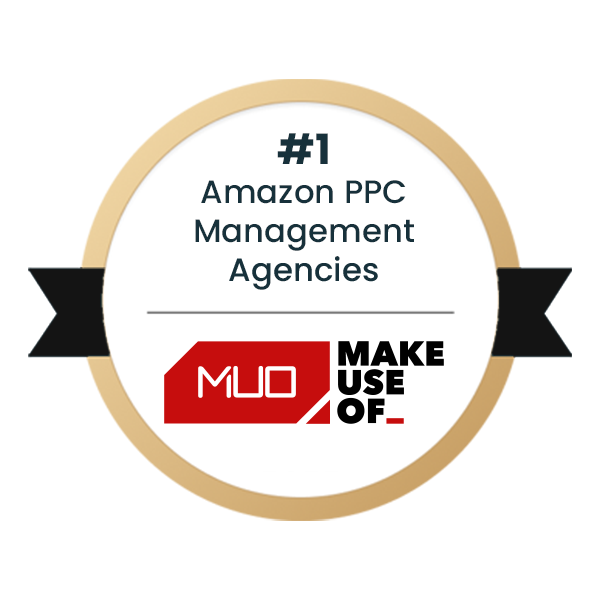Introduction: Why Campaign Structure Determines Your Success
Most Amazon sellers treat PPC campaign structure as an afterthought—a costly mistake that compounds over time. Poor structure doesn’t just make management difficult; it actively prevents optimization, wastes budget, and limits growth potential. The difference between a well-structured account generating 15% ACoS and a chaotic one burning through budget at 50% ACoS often comes down to organization, not strategy.
Think of campaign structure as the foundation of a house. You can have beautiful furniture and expensive appliances, but if the foundation is flawed, everything eventually crumbles. Similarly, you can have perfect keywords and compelling ads, but without proper structure, optimization becomes impossible and scaling becomes chaotic.
This comprehensive guide reveals the exact campaign structures used by seven-figure Amazon sellers. We’ll cover everything from naming conventions to portfolio strategies, ensuring you have a scalable framework that grows with your business. Whether you’re managing one product or one thousand, these principles will transform your PPC from a necessary evil into a profit-generating machine.
The Architecture of Success: Understanding Campaign Hierarchy
The Three Levels of Organization
Amazon PPC operates on three hierarchical levels, each serving a distinct purpose:
- Portfolios act as your highest organizational level, grouping related campaigns for budget control and performance tracking. Think of portfolios as departments in your advertising agency—each with its own budget, goals, and performance metrics. Most sellers underutilize portfolios, missing opportunities for strategic budget allocation and performance analysis.
- Campaigns represent your strategic units, each with specific objectives, settings, and budgets. A campaign might focus on branded keywords, competitor targeting, or product launches. The key is ensuring each campaign has one clear purpose—multi-purpose campaigns become impossible to optimize effectively.
- Ad Groups contain your tactical elements—keywords and products. While Amazon allows multiple ad groups per campaign, best practice suggests one ad group per campaign for Sponsored Products. This 1:1 relationship provides maximum control and clarity in optimization.
Portfolio Strategies That Scale
Organize portfolios by business logic, not arbitrary groupings:
- By Product Category: If you sell yoga mats and water bottles, separate portfolios allow different ACoS targets and budget allocations. Yoga mats might tolerate 30% ACoS for market share, while water bottles require 20% for profitability.
- By Campaign Objective: Create portfolios for “Launch,” “Grow,” “Profit,” and “Liquidation” campaigns. This allows lifecycle-based management where products move between portfolios as they mature.
- By Profitability Tier: Separate “Hero” products (highly profitable), “Stable” products (break-even), and “Test” products (experimental). Allocate 60% of budget to Heroes, 30% to Stable, and 10% to Tests.
- By Season or Event: For seasonal sellers, create portfolios for “Q4 Holiday,” “Prime Day,” “Back to School.” This enables year-over-year comparison and seasonal budget planning.
The Single Keyword Ad Group (SKAG) Method: Maximum Control
Why SKAGs Dominate Professional PPC
The Single Keyword Ad Group structure—adapted from Google Ads—provides unparalleled control over your Amazon PPC. Instead of grouping 20-50 keywords in one ad group, each keyword gets its own campaign. While this creates more campaigns, the benefits far outweigh the management overhead:
- Precise Bid Control: Each keyword can have its optimal bid without affecting others. Your high-converting “yoga mat for beginners” can bid $2.00 while “exercise mat” bids $0.75, without compromise.
- Clear Performance Visibility: Attribution becomes crystal clear. You know exactly which keyword drives each sale, enabling surgical optimization.
- Budget Protection: High-spending keywords can’t drain budget from promising ones. Each campaign has protected budget allocation.
- Negative Keyword Precision: You can negative match variations without affecting the primary keyword, preventing overlap and competition.
Implementing SKAGs: The Practical Approach
Here’s how to structure SKAGs effectively:
- Naming Convention: [Match Type] – [Keyword] – [ASIN] – [Date] Example: “EXACT – yoga mat non slip – B08XX123 – 2025.01”
- Campaign Settings:
- One keyword per campaign
- One ad group per campaign
- All relevant product variations in the ad group
- Individual daily budgets based on keyword value
- Match Type Separation: Create separate campaigns for each match type:
- EXACT – yoga mat non slip
- PHRASE – yoga mat non slip
- BROAD – yoga mat non slip
This triples your campaign count but provides precise control over how each match type performs.
The Modified SKAG: Balancing Control and Managability
For sellers with large catalogs, pure SKAGs can become unwieldy. The Modified SKAG groups 3-5 highly related keywords:
- Thematic Grouping: Group keywords with identical intent:
- Campaign: “EXACT – Yoga Mat Size Variations”
- Keywords: “6ft yoga mat,” “extra long yoga mat,” “72 inch yoga mat”
- Performance Tiers: Group by historical performance:
- Campaign: “EXACT – High Converters”
- Keywords: Your top 5 converting keywords with similar ACoS
This reduces campaign count by 70% while maintaining 80% of SKAG benefits.
Campaign Naming Conventions: The Language of Scale
Why Naming Matters More Than You Think
Proper naming conventions aren’t about organization OCD—they’re about scalability, reporting, and team collaboration. When you’re managing 50+ campaigns, finding the right campaign to edit shouldn’t take five minutes of scrolling and guessing.
The Universal Naming Formula
Adopt this structure for immediate clarity:
[Portfolio][CampaignType][TargetingMethod][ProductIdentifier][MatchType/Placement]_[Date]
Examples:
- “LAUNCH_SP_AUTO_YogaMat_ALL_2025.01”
- “PROFIT_SP_MAN_B08XX123_EXACT_2024.12”
- “BRAND_SB_KW_AllProducts_PHRASE_2025.01”
Abbreviation Standards
Standardize abbreviations across your account:
- Campaign Types:
- SP = Sponsored Products
- SB = Sponsored Brands
- SD = Sponsored Display
- Targeting Methods:
- AUTO = Automatic
- MAN = Manual Keyword
- PAT = Product Targeting (ASIN)
- CAT = Category Targeting
- Match Types:
- EX = Exact
- PHR = Phrase
- BR = Broad
- Campaign Objectives:
- LCH = Launch
- GRW = Growth
- PRF = Profit
- LIQ = Liquidation
- DEF = Defensive
The Four-Pillar Campaign Structure: A Complete System
Pillar 1: Discovery Campaigns (Research Mode)
Discovery campaigns identify new opportunities using broad targeting:
- Automatic Campaigns: Your keyword discovery engine
- Settings: All targeting groups enabled
- Bids: Conservative (50% of suggested)
- Budget: 10-15% of total PPC spend
- Optimization: Weekly harvest of converting search terms
- Broad Match Research: Controlled exploration
- Keywords: 5-10 root keywords only
- Bids: 30% below exact match campaigns
- Negative Matches: Aggressive to prevent waste
- Purpose: Find new long-tail variations
- Category Targeting: Competitor research
- Target: Competitor categories and brands
- Bids: Start at minimum ($0.30-0.50)
- Analysis: Which competitor audiences convert?
Pillar 2: Performance Campaigns (Profit Mode)
Performance campaigns monetize proven keywords:
- Exact Match Champions: Your profit drivers
- Keywords: Only 2+ conversion keywords from Discovery
- Bids: Aggressive (100-120% of suggested)
- Budget: 50-60% of total PPC spend
- Optimization: Daily bid adjustments based on ACoS
- Phrase Match Expansion: Controlled scaling
- Keywords: Successful exact match roots
- Bids: 80% of exact match bids
- Purpose: Capture close variations
- Management: Weekly negative additions
Pillar 3: Defensive Campaigns (Protection Mode)
Defensive campaigns protect your market position:
- Brand Defense: Protecting your brand searches
- Keywords: Brand name, product names, variations
- Bids: Whatever it takes (ignore ACoS)
- Budget: Unlimited for profitable products
- Logic: Cheaper than losing customers to competitors
- ASIN Defense: Owning your product pages
- Target: Your own ASINs
- Placement: Product pages only
- Bids: Premium to ensure top placement
- Result: Competitors can’t advertise on your listings
Pillar 4: Conquest Campaigns (Attack Mode)
Conquest campaigns steal competitor traffic:
- Competitor ASIN Targeting: Direct assault
- Target: Competitor ASINs with worse reviews or higher prices
- Bids: Conservative initially, increase if profitable
- Ad Copy: Highlight your advantages
- Expectation: Higher ACoS but valuable market share
- Competitor Brand Keywords: Ethical piracy
- Keywords: Competitor brand names (where legal)
- Match Type: Exact only to control spend
- Bids: Test incrementally
- Note: Check trademark policies in your category
Advanced Structural Strategies: Beyond the Basics
The Dayparting Structure: Time-Based Optimization
Create separate campaigns for different time periods:
- Peak Hours Campaign (6 PM – 11 PM):
- Higher bids for prime shopping hours
- Larger budgets to capture demand
- Focus on competitive keywords
- Off-Peak Campaign (12 AM – 6 AM):
- Lower bids for budget efficiency
- Target long-tail keywords with less competition
- Maintain presence without overspending
- Weekend Warrior Campaign:
- Increased budgets for Saturday/Sunday
- Target leisure shoppers with different keywords
- Adjust for category-specific patterns
The Graduation System: Keyword Lifecycle Management
Implement a systematic keyword progression:
- Stage 1: Research (Automatic/Broad Campaigns)
- New keywords enter here
- Low bids, controlled budgets
- Graduate after 3 conversions
- Stage 2: Testing (Phrase Match Campaigns)
- Graduated keywords with potential
- Moderate bids, moderate budgets
- Graduate after reaching target ACoS
- Stage 3: Scaling (Exact Match Campaigns)
- Proven profitable keywords
- Aggressive bids, uncapped budgets
- Focus on impression share
- Stage 4: Harvest (Low Bid Campaigns)
- Keywords past their prime
- Minimum bids to capture remnant traffic
- Maintain presence without significant spend
The Portfolio Budget Strategy: Smart Money Management
Structure portfolios for automatic budget optimization:
- The 70-20-10 Rule:
- 70% to proven profitable campaigns
- 20% to testing and optimization
- 10% to experimental/launch campaigns
- Dynamic Reallocation: Create rules for automatic budget shifting:
- If Portfolio A achieves <20% ACoS, increase budget 10%
- If Portfolio B exceeds 40% ACoS, decrease budget 10%
- Review and adjust rules monthly
Structural Solutions to Common Problems
Problem: Campaign Cannibalization
When multiple campaigns compete for the same traffic:
Solution: The Exclusion Hierarchy
- Exact match campaigns get priority
- Add exact negatives to phrase campaigns
- Add phrase negatives to broad campaigns
- Add all manual keywords as negatives to automatic
Implementation Example:
- Exact Campaign: “yoga mat non slip”
- Phrase Campaign: “yoga mat” (negative exact: “yoga mat non slip”)
- Broad Campaign: “mat” (negative phrase: “yoga mat”)
- Auto Campaign: (negative all manual keywords)
Problem: Budget Spreading Too Thin
When campaigns underspend due to fragmentation:
Solution: The Consolidation Framework
- Identify campaigns with <50% budget utilization
- Merge similar underperforming campaigns
- Create “catch-all” campaigns for low-volume keywords
- Implement portfolio-level budgets for flexibility
Problem: Losing Track of Optimizations
When you can’t remember what changed:
Solution: The Change Log System
- Create a spreadsheet with columns: Date, Campaign, Change, Reason, Result
- Update weekly during optimization sessions
- Review monthly to identify successful patterns
- Use campaign names with version numbers (v1, v2, v3)
Scaling Your Structure: From 1 to 100 Products
The Template Approach: Consistency at Scale
Create campaign templates for rapid deployment:
The Launch Template:
- AUTO – Discovery – [Product] – All Match
- EXACT – Brand Defense – [Product]
- CAT – Competitor Target – [Product]
- BROAD – Research – [Product] – Top 5 Keywords
The Optimization Schedule:
- Day 1-7: Run templates without changes
- Day 8-14: First optimization pass
- Day 15-30: Weekly optimizations
- Day 31+: Bi-weekly maintenance
The Bulk Management System
For 20+ products, individual management becomes impossible:
Tier-Based Management:
- Tier 1 (Top 20% of products): Daily attention
- Tier 2 (Middle 60%): Weekly optimization
- Tier 3 (Bottom 20%): Monthly review only
Bulk Operations Priority:
- Negative keyword additions (prevent waste)
- Bid adjustments for over/under ACoS targets
- Budget reallocation to performing campaigns
- Keyword graduation from auto to manual
- Pausing non-performing elements
International Expansion: Structural Considerations
The Market Replication Strategy
When expanding internationally, don’t start from scratch:
The 80/20 Translation:
- 80% of US structure transfers directly
- 20% requires localization
- Start with exact translations of proven keywords
- Add local variations discovered through automatic campaigns
Market-Specific Structures:
- UK: Similar to US but add “whilst,” “colour” variations
- Germany: Longer compound keywords, stricter brand bidding
- Japan: Character limits affect naming conventions
- Canada: Bilingual considerations for Quebec
The Currency Adjustment Framework
Structure campaigns to account for currency differences:
Bid Ratios by Market:
- Set baseline bids as percentage of US bids
- UK: 80-90% of US bids (GBP stronger)
- Canada: 70-80% of US bids (CAD weaker)
- Europe: 85-95% of US bids (EUR volatile)
- Adjust monthly based on exchange rates
The Seasonal Structure: Preparing for Peak Periods
Q4 Holiday Architecture
October through December requires special structure:
The Triple-Layer Approach:
- Layer 1: Evergreen Campaigns (Run year-round)
- Maintain normal structure and budgets
- Provides baseline performance comparison
- Ensures continuity after holiday surge
- Layer 2: Holiday Boost Campaigns (October-December)
- Duplicate best performers with “HOLIDAY” prefix
- 2-3x higher budgets and bids
- Target gift-related keywords
- Pause January 1st
- Layer 3: Event-Specific Campaigns (Black Friday, Cyber Monday)
- Ultra-aggressive budgets (5-10x normal)
- Maximum bids on top keywords
- Active only during event windows
- Accept higher ACoS for volume
Prime Day and Lightning Deal Structure
Create temporary campaigns for major events:
- Pre-Event Campaigns (2 weeks before):
- Target “Prime Day deals” keywords
- Build awareness and wish lists
- Lower bids, informational focus
- Event Campaigns (During Prime Day):
- Unlimited budgets on proven keywords
- Bid for top of search exclusively
- Focus on conversion, not ACoS
- Run 24/7 without dayparting
- Post-Event Campaigns (1 week after):
- Target “missed Prime Day” searches
- Capture deal-seekers with regret
- Moderate bids and budgets
- Transition back to normal structure
Measurement and Optimization: Making Structure Work
The KPI Hierarchy: Measuring Structural Success
Different structural levels require different metrics:
- Portfolio Level KPIs:
- Overall TACoS (Total Advertising Cost of Sale)
- Portfolio ROAS trends
- Budget utilization rate
- Month-over-month growth
- Campaign Level KPIs:
- Individual campaign ACoS vs. target
- Click-through rate by campaign type
- Conversion rate by targeting method
- Cost per acquisition trends
- Ad Group/Keyword Level KPIs:
- Keyword-specific profitability
- Search term relevance score
- Negative keyword efficiency
- Graduation rate (auto to manual)
The Optimization Calendar: Structured Improvement
Create a systematic optimization schedule:
- Daily Tasks (15 minutes):
- Budget check and reallocation
- Pause keywords exceeding ACoS limits
- Activate paused profitable campaigns
- Weekly Tasks (2 hours):
- Search term report analysis
- Negative keyword additions
- Bid adjustments based on performance
- Keyword graduation process
- Monthly Tasks (4 hours):
- Complete structural audit
- Portfolio rebalancing
- Campaign consolidation/expansion
- Competitive analysis and adjustment
- Quarterly Tasks (Full day):
- Strategic structure overhaul
- Seasonal planning and preparation
- Tool evaluation and integration
- Team training on new structures
Tools and Software: Automating Structure
Native Amazon Tools
Maximize built-in features before adding complexity:
- Portfolio Budgets: Use Amazon’s portfolio budget feature to automatically redistribute spend between campaigns based on performance.
- Automated Rules: Create rules for common optimizations:
- Pause keywords with 50+ clicks, 0 conversions
- Increase bids 10% when ACoS < target
- Decrease bids 10% when ACoS > target by 20%
- Bulk Operations: Use bulk sheets for structural changes:
- Export all campaigns weekly
- Make changes in Excel with formulas
- Re-import for instant updates
- Maintain version control
Third-Party Structure Tools
When native tools aren’t enough:
- For Organization:
- Perpetua: Excellent campaign organization and automation
- Pacvue: Enterprise-level structure management
- Sellerize: Visual campaign builders and templates
- For Analysis:
- DataHawk: Structure performance analytics
- Intentwise: Cross-portfolio reporting
- PPC Scope: Visual campaign mapping
- For Automation:
- Scale Insights: Algorithmic structure optimization
- BidX: Rule-based structural management
- Teikametrics: AI-powered structure suggestions
Building Your Tool Stack
Layer tools based on business growth:
- Phase 1 ($0-10K monthly revenue):
- Amazon native tools only
- Excel/Google Sheets for analysis
- Manual optimization and structure
- Phase 2 ($10-50K monthly revenue):
- Add keyword research tool (Helium 10)
- Basic automation tool (Sellozo)
- Maintain manual structure control
- Phase 3 ($50K+ monthly revenue):
- Full automation suite (Perpetua/Pacvue)
- Advanced analytics (DataHawk)
- Consider agency management
Case Studies: Structure in Action
Case Study 1: The Chaos to Clarity Transformation
Client Profile: Kitchen gadget seller, 15 products, $50K monthly revenue
Before:
- 3 campaigns total (“All Products Auto,” “Manual,” “Brand”)
- 45% ACoS, declining sales
- No visibility into product performance
Restructure Process:
- Created portfolios by product category
- Implemented SKAG structure for top 30 keywords
- Separated automatic campaigns by product
- Added defensive and conquest campaigns
After (90 days):
- 127 organized campaigns
- 28% ACoS
- 40% sales increase
- Clear optimization path
Case Study 2: The International Expansion
Client Profile: Fitness equipment brand, US success expanding to UK/DE
Challenge: Replicate US success internationally without starting over
Structure Solution:
- Cloned US campaign structure to UK/DE
- Translated keywords maintaining structure
- Created market-specific portfolios
- Implemented currency-adjusted bid rules
Results:
- UK profitable in 45 days (vs. 120 days for US)
- Germany reached target ACoS in 60 days
- 70% time savings on international management
Case Study 3: The Seasonal Seller
Client Profile: Christmas decoration seller, 80% of sales in Q4
Problem: Couldn’t scale efficiently during peak season
Structural Innovation:
- Created “Always On” base structure
- Built “Q4 Boost” parallel structure
- Developed “Event Surge” temporary campaigns
- Implemented automated budget rules
Outcome:
- 250% Q4 revenue increase
- Maintained 22% ACoS during peak (vs. 35% previous year)
- Smooth transition back to off-season
Common Mistakes and How to Avoid Them
- Mistake 1: Over-Complicating Too Early
- The Problem: Creating 100 campaigns for 5 products
- The Solution: Start simple, expand based on data
- The Rule: One campaign per product until $1,000 monthly spend
- Mistake 2: Inconsistent Naming Evolution
- The Problem: Changing naming conventions mid-stream
- The Solution: Document and stick to your system
- The Tool: Create a naming convention guide document
- Mistake 3: Ignoring Portfolio Power
- The Problem: Managing campaigns individually
- The Solution: Think in portfolio strategies
- The Benefit: 50% less management time
- Mistake 4: Static Structure Syndrome
- The Problem: Never evolving structure with business growth
- The Solution: Quarterly structure audits
- The Metric: If management takes >2 hours daily, restructure
- Mistake 5: Platform Mixing
- The Problem: Applying Google Ads structure to Amazon
- The Solution: Respect platform differences
- The Key: Amazon shoppers have buying intent; structure accordingly
Future-Proofing Your Structure
Preparing for Amazon’s Evolution
Amazon PPC evolves rapidly. Build flexible structures:
- Modular Campaigns: Create campaigns that can be easily modified or replaced without affecting others
- Clear Documentation: Maintain a structure guide that new team members can follow
- Regular Audits: Schedule quarterly reviews to incorporate new features and strategies
The AI Integration Plan
As Amazon introduces more AI features:
- Hybrid Structure: Maintain manual control while testing AI recommendations in parallel
- Performance Comparison: Run identical products in AI vs. manual structures
- Gradual Adoption: Implement AI features one portfolio at a time
Scaling for Exit
If planning to sell your business:
- Clean Structure: Organized campaigns increase business value
- Documentation: Create SOPs for campaign management
- Performance History: Maintain clear records showing structural improvements
- Transferability: Ensure structure works without your daily involvement
Your 30-Day Implementation Plan
Week 1: Audit and Planning
- Days 1-3: Document current structure
- List all campaigns and their purposes
- Identify overlaps and gaps
- Calculate current performance metrics
- Days 4-7: Design new structure
- Create portfolio strategy
- Design naming conventions
- Plan migration approach
Week 2: Foundation Building
- Days 8-10: Create portfolios
- Implement portfolio structure
- Set portfolio budgets
- Assign existing campaigns
- Days 11-14: Rename and reorganize
- Implement naming conventions
- Consolidate redundant campaigns
- Document all changes
Week 3: Optimization and Expansion
- Days 15-18: Build missing pieces
- Launch defensive campaigns
- Create conquest campaigns
- Add discovery campaigns
- Days 19-21: Implement negatives
- Add negative keywords to prevent overlap
- Create negative keyword lists
- Apply across campaigns
Week 4: Automation and Refinement
- Days 22-25: Set up automation
- Create bid rules
- Implement budget rules
- Schedule regular reports
- Days 26-30: Monitor and adjust
- Track performance changes
- Make minor adjustments
- Document lessons learned
Conclusion: Structure as Competitive Advantage
Most Amazon sellers view campaign structure as a necessary evil—something to set up once and forget. This mindset leaves money on the table and creates management nightmares as businesses grow. The sellers who dominate their categories understand that structure isn’t just organization—it’s strategy.
A well-structured account becomes a competitive advantage. While competitors waste time searching for campaigns and making blind optimizations, you’ll execute strategic changes in minutes. While they struggle to scale during peak seasons, your structure automatically adapts. While they burn budget on overlapping keywords, your structure ensures every dollar has a purpose.
The structures outlined in this guide aren’t theoretical—they’re battle-tested by sellers generating millions in revenue. They’ve been refined through thousands of hours of optimization and millions of dollars in ad spend. Whether you adopt them wholesale or adapt them to your needs, the principles remain constant: clarity, scalability, and purposefulness.
Remember: Perfect structure doesn’t exist, but chaotic structure guarantees failure. Start with the basics, implement consistently, and evolve based on data. Your future self—the one managing 10x your current revenue—will thank you for the foundation you build today.
The best time to restructure was when you started. The second-best time is now. Your products deserve a structure that maximizes their potential. Your business deserves a foundation that enables growth. And you deserve a system that makes management enjoyable rather than overwhelming.
Take action today. Choose one structural improvement from this guide and implement it. Then another. Then another. Within 30 days, you’ll have transformed your Amazon PPC from a necessary burden into a competitive advantage that drives predictable, profitable growth.
Ready to restructure your campaigns? Download our free Campaign Structure Template and Migration Checklist to ensure a smooth transition to a scalable, profitable PPC structure.







